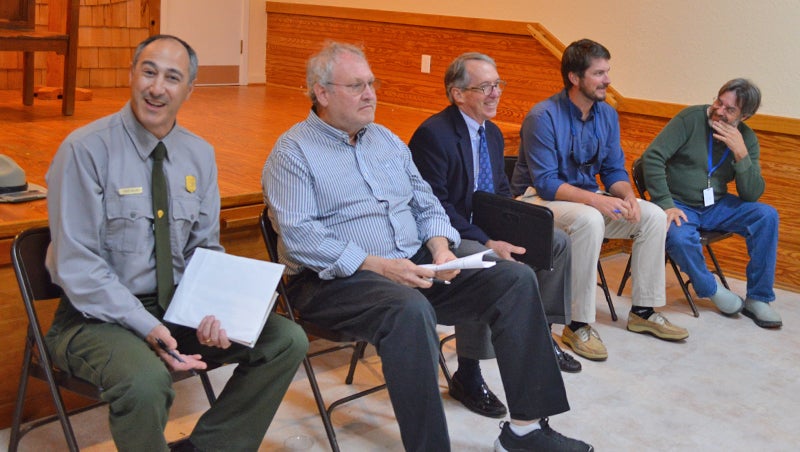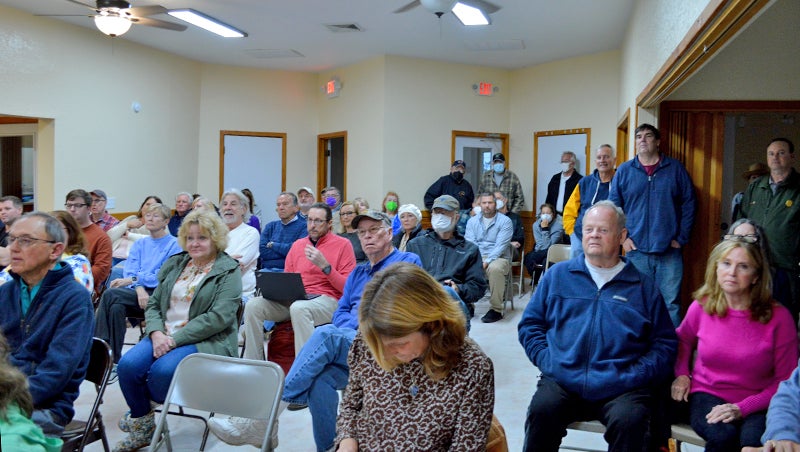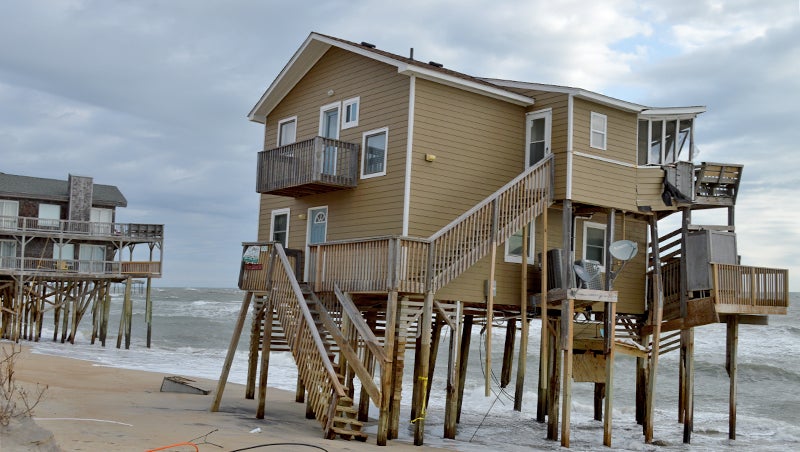Discussion on oceanfront houses in Rodanthe draws crowd
Published 11:04 am Sunday, March 13, 2022
|
Getting your Trinity Audio player ready...
|
More than 80 people crowded into the Rodanthe-Waves-Salvo Community Building to hear a panel talk about Rodanthe houses imperiled by beach erosion. It was standing room only Thursday, March 3.
Panelists described the current situation, planned emergency action and answered questions about long-term solutions.
During the early morning hours on Feb. 9, a house on Ocean Drive collapsed in the surf. Very soon, the debris washed southward to Ramp 23 south of Salvo. Within 48 hours, debris was found at Ramp 34, north of Avon.
The owners hired a contractor, a debris removal plan was submitted and the national seashore issued a permit for debris removal on Friday morning, Feb. 11.
The debris is a safety hazard for visitors to the Cape Hatteras National Seashore. Quickly, boards with nails can become buried in sand to be found only by someone innocently walking the beach.
Due to the danger, the national seashore closed the beach from 100 yards north of the last house on Ocean Drive and 100 yards south of the last house on the south end. Ocean Drive is just south of the Rodanthe Pier.
At the meeting, Dave Hallac, superintendent of the National Parks of Eastern North Carolina, said “there remains debris on the beach. We’re going to do our best to clean things up.”
On Ocean Drive, eight of the remaining 11 houses with oceanfront property are tagged by Dare County as uninhabitable due to structural failure, septic system compromise and ingress-egress problems, reported Noah Gillam, Dare County’s planning director.
At least three houses are under watch for complete failure. The high tide line is past the western most pilings of the houses.
The immediate need is for emergency action plan.
Staffers for both the Cape Hatteras National Seashore and Dare County have contacted oceanfront house owners asking owners to secure an insured contractor on standby and get a seashore approved debris removal plan in place immediately.
One problem with the initial collapsed house is that a contractor with enough insurance was not on standby ready to act and no plan was approved. Another problem was that the call for volunteer help went out for a cleanup on Feb. 14.
The current plan is for National Park staff to respond immediately and for volunteers to be alerted and working within 24 hours. Both will have instructions to drag debris well above the high tideline.
Asked an audience member, “Why don’t you make them take it down?”
“We can’t make those folks take it down,” responded Robert L. Outten, Dare County’s manager and attorney. He said Nags Head tried it and courts ruled against the town.
The oldest house on Ocean Drive is the northern most house built in 1970. Six houses were built in the 1980s, one in 1992 and three with 2000 dates 2002, 2003, 2004, according to Dare County website.
Commissioner Danny Couch, referring to the age of the houses, said “we didn’t get here overnight. It’s going to get worse.”
Couch tackled insurance. He has been in touch with the Insurance Commissioner’s office.
The legal issue of public versus private property is being explored by the National Park Service.
With short-term mitigation stymied, questioners moved to longer term approaches, such as beach nourishment and sand bag placement.
Outten responded to queries about beach nourishment. The county has established a beach nourishment fund fed by two cents of the occupancy tax. Outten reported that no money is available for a Rodanthe project, considering planned current projects and the policy to nourish the existing projects every five years.
Additionally, the beach nourishment fund would pay half the project cost and Rodanthe property owners would pay half the cost. The projects in Avon and Buxton are based on protecting NC 12, a difficult argument to make for Ocean Drive.
About sandbags, Outten reported that the Coastal Resources Commission has rules and permits are available. But Hallac responded, “we generally do not favor sand bags.” He said when installed none are removed making a mess of the beach. Additionally, he said “sand bags act as a wall.”









